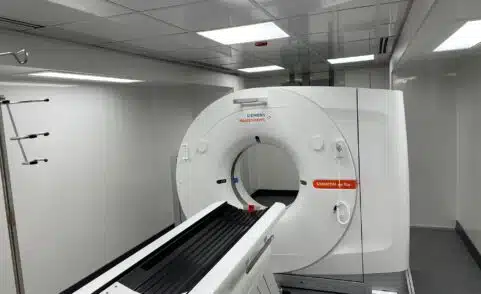
When X-ray is not Enough: Ordering MRI for Chiropractic Patients
At first glance, the patient’s lower back pain seemed uncomplicated. Still, there was something uncanny about the case for Steven Saro, DC, of the Saro Chiropractic Health Center 40 miles north of Boston in Dracut, MA. He decided to order an MRI and found the patient had a sizeable tumor on the spinal cord.
“It probably did save that patient’s life, but without the imaging we would not have found it,” says Dr. Saro.
Chiropractors often order MR imaging when they want to investigate disc herniations, malalignment of bones, or soft tissue injuries. “MRI gives a lot of information, especially for the back, which is what chiropractors are really interested in,” says Stephen Karshbaum, MD, a RAYUS radiologist who has been reading MR scans for more than 20 years. Dr. Karshbaum says MRI shows more of the acute or chronic illness of the injury because when something is acutely injured, it has a lot of fluid and bone marrow. “We can give some very important information with MR imaging that we can’t with X-ray. I believe that it helps chiropractors change their treatment plans.”
When X-ray is not enough
It’s typically low back and leg pain, neck and arm pain, or headaches that lead people to Dr. Saro for treatment. An X-ray can be a good starting point, but sometimes additional information is needed that you can’t get from an X-ray. Typically, MRI is a next step for these reasons:
- To exclude fracture
- To look for tumors
- To look for dislocations
- To look for aneurisms
The difference between X-ray and MR images, he says, is like the difference between watching TV in black and white versus in color.
“Typically, if we have an MRI on any patient, it covers everything,” says Dr. Saro. “Nothing’s going to be missed. You still have to manage the person appropriately. But MRI is the gold standard in my opinion.”
Even though MRI provides so much more detail, Dr. Saro estimates that only five to 10-percent of his patients are eventually sent for MR scans. At his practice, he’s developed a standard of care to determine who needs an MRI and who doesn’t.
Establishing an imaging standard of care
Patients fit into what Dr. Saro calls his algorithm to help determine what kind of images will be most useful in their care plan. Most start with X-rays and then go through three to four weeks of treatment. He expects 50-percent objective improvement in those three to four weeks. If a patient isn’t progressing the way he expects, then an MRI is the next step. The pictures he gets from an MR aren’t a “panacea” says Dr. Saro, but they do help guide the management of patients who aren’t responding as expected.
When a patient needs an MRI, Dr. Saro orders it from RAYUS Radiology (RAYUS). The free-standing imaging centers are easy for his patients to navigate and spare them the confusion of trying to find the imaging department within one of his local hospitals. He says the reports he gets back from his patients about the care they receive from the Rayus team are so positive that he continues to refer more of his patients there.
How to order MRI from RAYUS
On a busy Tuesday morning, the reception area is already filling up with patients when Dr. Saro turns on his computer. Within a moment, he’s reviewing the radiologist’s report and images of a patient he sent to RAYUS the night before. The patient was scanned at 7 p.m., and he already has the report in front of him. Minutes later he’s on the phone with the patient, talking through next steps in treatment.
Oftentimes the reports Dr. Saro gets come from more than one radiologist. RAYUS has medical radiologists review the images and report findings, then a chiropractic radiologist will review the same images to validate the report. The over-reads, coupled with chiropractic-specific reports are like a safety blanket, says Dr. Saro. “For instance, in the last paragraph, it may say something to the effect, ‘In spite of the fact that there is a disc herniation at this level, compressing that nerve root, there are no contrary indications to spinal manipulation.’ That’s hugely important to me.”
There’s no secret code to ordering an MRI, says RAYUS’s Dr. Karshbaum. It’s just like ordering an X-ray, ultrasound or any other diagnostic study. At Dr. Saro’s clinic, the computer in each exam room is set up with the RAYUS portal, to make the process even easier. There’s a team of insurance specialists ready at RAYUS to handle the pre-authorizations necessary and get patients scheduled, even on very short notice. And once the report is delivered, RAYUS radiologists are only a phone call away to answer questions. “We’re available 24 hours a day, but don’t call me at midnight,” jokes Dr. Karshbaum. The radiologists at RAYUS pride themselves on being available to referring providers for a phone consultation. For Dr. Saro, that means he can get the answers he needs to guide treatment decisions for his patients from an imaging partner he trusts.
About Dr. Karshbaum
Stephen Karshbaum, MD is a board certified diagnostic radiologist at RAYUS Radiology (RAYUS) in Massachusetts. Read his full bio here.
